Varicose veins are a widespread disease that develops in many adults.
According to statistics, this disease develops more often in women than in men.Such veins appear on the legs and are more common with age.
In addition, the article mentions important facts about varicose veins, appropriate photos are given to better consider how they look, what they are and how to treat them.
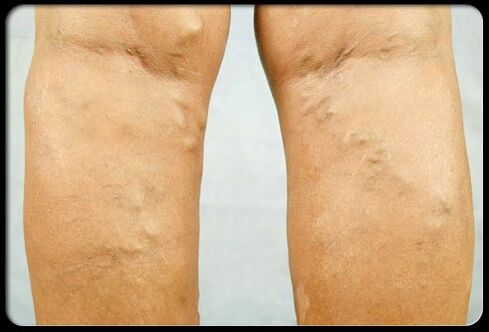
What are varicose veins?
A variety of enlarged veins are abnormally enlarged veins that most often develop on the legs.Usually blue, purple or skin color.
They look like vessels of enlarged, adhesive and convex blood vessels that can stand above the skin.
What are the spider -covered veins?
Aurcular veins (also called telangectase or vascular asterisks, vascular mesh) is the accumulation of small blood vessels that develops near the surface of the skin.
They often have red, blue or purple, have a network appearance.Most often, vascular stars are found on the face and feet.
What Causes Varicose Veins?
Varicose veins are caused by structural disorders in the bloodstream.
The veins return to the heart from different parts of the body.They have many unilateral valves to avoid blood.
For many reasons, these valves can be damaged, causing the opposite blood flow inside the veins.Long stagnation of blood increases the pressure inside the vein and weakens the wall of the blood vessels.
Then, due to blood stagnation and enlargement of the affected blood vessels, the spider -form and varicose veins develop.
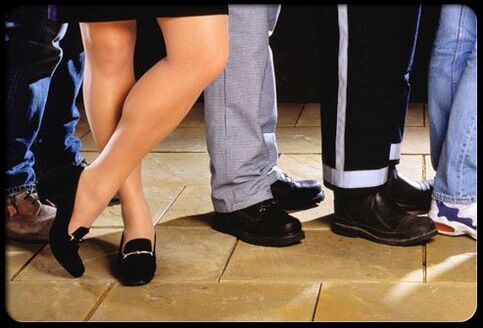
Causes of Development?
There are many different risk factors that increase human chances to develop varicose veins.
They include:
- Older age
- Long standing or sitting,
- Obesity,
- Pregnancy,
- Hormone therapy,
- Accepting contraceptives,
- Injuries
- Previous surgical interventions in the veins,
- Anamnesis of thrombosis veins,
- Family History.
Symptoms of varicose veins
Often varicose veins have no other symptoms and signs, except for their undesirable cosmetic species.However, some people may experience some symptoms of varicose veins.
Symptoms may include:
- Coloring
- The feeling of pulsation,
- This is a boring pain,
- Burning,
- Itching,
- Gravity,
- Molding or cramps in the legs.
These symptoms often worsen after prolongation or standing.Individuals can also develop brown skin color and eventually trophic ulcers.
Complications of varicose veins
If you are not treated with varicose veins, this can lead to the following:
- Trophic skin ulcers develop.These open wounds usually appear on the legs.Sometimes they can lead to the development of soft tissue infection.
- Vein clouds develop (superficial thrombophiletic).
- Bleeding from the veins is possible.
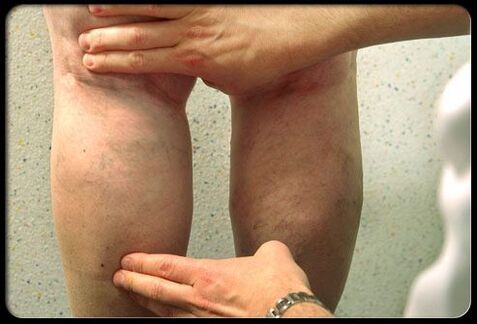
A vascular grid and a diagnosis of varicose veins
You can diagnose varicose veins using a thorough examination of the affected area, which is usually on the legs.
The examination involves visual inspection and problem area palpation.Particular attention is paid to redness, swelling, skin color changes and trophic ulcers.
Home treatment
There are various methods that can be used at home if they appear to weaken certain symptoms.These conservative methods can also help prevent any potential complications.
Compression socks
Compression socks are a simple measure for home treatment to help alleviate symptoms in the legs.
They improve blood circulation, increasing pressure in the legs.These socks are of different types and compression strengths.Your doctor may advise you to have a pair of suitable for you.Usually sold in pharmacies.
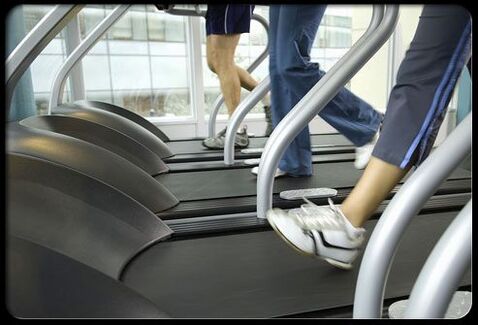
Changing a lifestyle
Regular physical exercise and weight loss program may help alleviate the symptoms of spiders and varicose veins.
Buried people avoid prolonged or sit, raise their feet, or sleep during sleep to improve blood circulation and reduce swelling in the legs.
Sclerotherapy
Sometimes a conservative treatment of varicose veins at home may not give the desired result.In these cases, more specialized medical procedures can be performed, depending on the placement and size of the abnormal veins.
These medical procedures are often performed for cosmetic reasons.
Sclerotherapy is a conventional technique that can be performed by your doctor;It is very effective in eliminating spider veins and some varicose veins.
During this procedure, which does not require anesthesia, the doctor prescribes a liquid solution directly in the affected vein, which causes its gluten and, eventually, disappearance.To achieve optimal results, several sessions may be needed.Potential side effects include bruises, swelling, bleeding, infection and skin color changes.
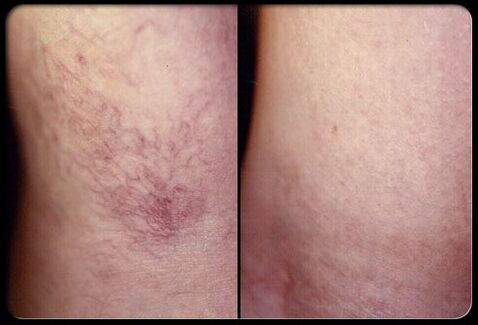
Sclerotherapy: before and after
Sclerotherapy treatment may require several sessions, and the healing time can change, depending on the person.
Basically, spider-shaped veins begin to disappear within 3-6 weeks after treatment, and varicose veins will take several months to improve.
Laser treatment of varicose veins
Laser therapy is another alternative medical procedure that can be performed with your doctor.It is sometimes used in addition to sclerotherapy for maximum use of results.This technique is most effective for arachnid and small varicose veins.
For patients who are afraid of needles, laser therapy has an alternative to treatment, but your doctor may advise you which method is better in your particular situation.
Laser therapy uses a focused light that warms the affected blood vessel that eventually disappears.
Potential side effects include a slight redness or tumor around the treatment area, skin color change, blisters and rarely scars.
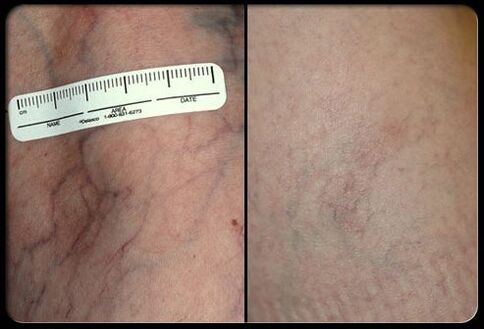
Laser therapy is a recently developed method for the treatment of varicose veins, in which the affected area is treated with light pulsation of light.
Laser Therapy: Before and after the procedure
As with sclerotherapy, several sessions of laser therapy are often necessary to achieve optimal results.Improvements can take several weeks after treatment.
Surgical intervention in the veins
Surgery is a treatment option for more severe varicose veins.Your doctor will consider various possible surgical procedures with you to decide which varicose veins are optimal for you.One of the surgical methods is the ligation of the veins and their removal on the skin with minor wounds.
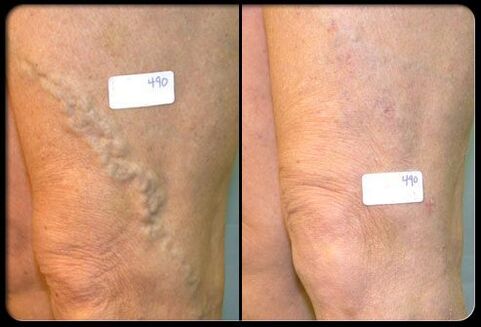
Surgery on the vein: Before and after treatment
Vein ligation and removal often successfully eliminates the symptoms and cosmetic problems of varicose veins.This operation is performed under local, spinal or general anesthesia in a medical facility.
Complete recovery of this surgical intervention usually takes about 2-4 weeks.Potential complications can include infection, bleeding, scars, nerves, deep vein thrombosis, adverse reactions to anesthesia.
Intravenous laser therapy
Intravenous laser therapy is a minimal invasive surgical procedure consisting of a thin conductor in the vein affected by laser irradiation, which causes its narrowing.
Intravenous laser therapy is characterized by 98% of initial success.This procedure is performed on an outpatient basis under local anesthesia or using moderate sedation.
Patients report less pronounced pain and recover more rapidly with intravenous laser therapy, vein ligament and surgical removal.
Ablation of Radio Frequency
Intravenous radio frequency ablation is a minimal invasive procedure that resembles intravenous laser therapy.
Instead of using laser light, the catheter inside the vein uses radio frequency energy, which causes the affected vessel to heat and narrow.
Like intravenous laser therapy, patients report less intense pain and faster recovery, vein attire and surgical removal.
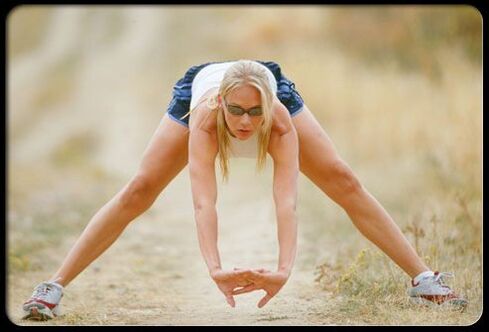
Prevention of varicose veins
Although varicose veins are not always possible to avoid, there are various methods that you can take to reduce their chances of development.
Preventive tips include:
- Regular physical exercise;
- Maintaining healthy weight;
- Avoid prolonged sitting or standing;
- Avoid crossing your feet at the session;
- Raise your feet higher during rest;
- Do not wear clothes that your body is waist, curved and weakening your legs.
Dear friends.The article is not a medical council and cannot serve as a consultation with your doctor.












































